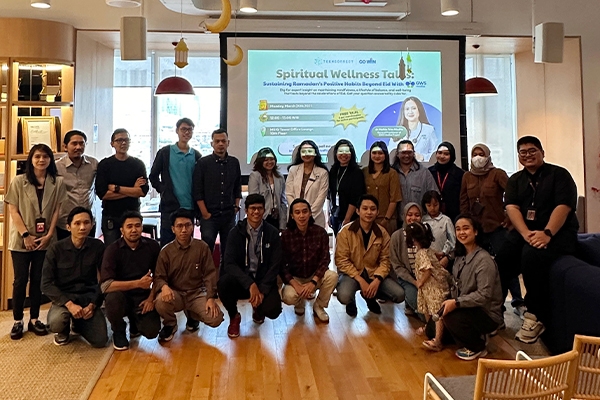From Fasting to Feasting: Maintaining a Healthy Lifestyle After Ramadan

Many people struggle to maintain a healthy lifestyle after Eid al-Fitr after a full month of fasting.
To address this issue, PT TechConnect held a Health Talk session entitled “From Fasting to Feasting: Maintaining a Healthy Lifestyle After Ramadan” at Sinarmas TechConnect, MSIG Tower (3/24).
The main speaker for this occasion was dr. Muthia Trisa Nindita from GWS Medika spoke about how employees maintain healthy habits after Eid.
Diseases that often appear after Eid
On this occasion, Dr. Muthia said, "After Eid al-Fitr, many people experience various health problems, such as hypercholesterolemia (high cholesterol), hypertriglyceridemia, hypertension, hyperglycemia (high blood sugar), and hyperuricemia (high uric acid). Drastic changes in diet often cause this condition after a month of fasting."
To avoid these health problems, Dr. Muthia suggests several steps that can be applied, including:
- Regular exercise helps the body's metabolism process excess fat and substances.
- Adopting a healthy diet by paying attention to calorie, fat, sugar, and salt intake.
- Getting enough rest and managing stress well.
- Quit smoking and reduce alcohol consumption.
- Practicing mindful eating when enjoying Eid dishes to control the portion and quality of food consumed.
Challenges in maintaining health
During the Q&A session, one participant expressed concerns regarding cholesterol and uric acid levels that remained high.
"I have maintained my diet by avoiding offal, fried foods, or sugary drinks, but why are my uric acid and cholesterol high?" he asked.
Dr. Muthia explained that genetic factors, lack of physical activity, stress, and other health problems, such as hypothyroidism or kidney disorders, can also be the cause.
She emphasized that exercise a critical role in helping the body process fat and remove excess substances through sweat and urine.
Exercise helps increase metabolism and stimulates enzymes that help the body break down bad cholesterol (LDL) and increase good cholesterol (HDL). In addition, exercise increases uric acid excretion through sweat and urine while decreasing inflammation that can worsen high uric acid levels.
"Even though the diet has been changed, if it is not accompanied by physical activity, the body cannot metabolize substances optimally," she emphasized.
In addition, the question of genetic hypercholesterolemia also attracts attention. Dr. Muthia explained that high cholesterol can be inherited in families, known as familial hypercholesterolemia.
In addition to genetic factors, family diet and lifestyle contribute to an increased risk of this disease. This condition occurs due to mutations in the gene that regulates the breakdown of cholesterol in the body so that cholesterol levels remain high even though the diet is healthy.
"In addition to genetic factors, family dietary habits and lifestyle also have an impact. If the family is accustomed to consuming foods high in saturated fat, lacks physical activity, or is obese, the risk of high cholesterol in children is greater," she added.
Making healthier food choices
Many participants wanted to know how to ensure their food choices remain nutritious. dr. Muthia encouraged everyone to read nutrition labels carefully, focusing on calories, saturated fat, added sugar, and sodium content. When labels are unavailable, she suggested using nutrition-tracking apps to understand the nutritional value of their meals.
Read more: How to Read Nutrition Labels.
Through this session, participants are encouraged to maintain healthy habits developed during Ramadan and implement them into their daily lives. With a balanced diet and regular physical activity, it is possible to stay healthy even during the festive season.


